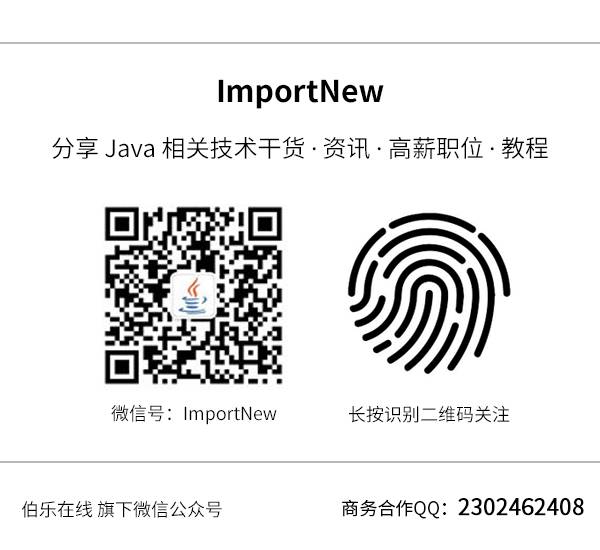作者:微信小助手
发布时间:2018-10-12T12:21:21
(点击上方公众号,可快速关注)
来源:zy_lebron ,
youngforzy.top/2018/02/15/ActiveMQ结合Spring收发消息/
ActiveMQ 结合 Spring 收发消息
直接使用 ActiveMQ 的方式需要重复写很多代码,且不利于管理,Spring 提供了一种更加简便的方式————Spring JMS ,通过它可以更加方便地使用 ActiveMQ。
Maven 依赖
结合Spring使用ActiveMQ的依赖如下:
<!-- Spring JMS -->
<dependency>
<groupId>org.springframework</groupId>
<artifactId>spring-jms</artifactId>
<version>${spring.version}</version>
</dependency>
<!-- xbean 如<amq:connectionFactory /> -->
<dependency>
<groupId>org.apache.xbean</groupId>
<artifactId>xbean-spring</artifactId>
<version>3.16</version>
</dependency>
<!-- ActiiveMQ -->
<dependency>
<groupId>org.apache.activemq</groupId>
<artifactId>activemq-core</artifactId>
<version>5.7.0</version>
</dependency>
<dependency>
<groupId>org.apache.activemq</groupId>
<artifactId>activemq-pool</artifactId>
<version>5.7.0</version>
</dependency>
ActiveMQ.xml 文件
<?xml version="1.0" encoding="UTF-8"?>
<beans xmlns="http://www.springframework.org/schema/beans"
xmlns:xsi="http://www.w3.org/2001/XMLSchema-instance"
xmlns:amq="http://activemq.apache.org/schema/core"
xsi:schemaLocation="http://www.springframework.org/schema/beans
http://www.springframework.org/schema/beans/spring-beans-4.0.xsd
http://activemq.apache.org/schema/core
http://activemq.apache.org/schema/core/activemq-core-5.12.1.xsd">
<!-- ActiveMQ 连接工厂 -->
<amq:connectionFactory id="amqConnectionFactory"
brokerURL="tcp://localhost:61616"
userName="admin"
password="admin" />
<!-- 提高效率,配置JMS连接工厂 -->
<bean id="connectionFactory" class="org.springframework.jms.connection.CachingConnectionFactory">
<constructor-arg ref="amqConnectionFactory" />
<property name="sessionCacheSize" value="100" />
</bean>
<!-- 定义消息队列(Queue)-->
<!-- <bean id="QueueDestination" class="org.apache.activemq.command.ActiveMQQueue">
<!– 设置消息队列的名字 –>
<constructor-arg value="Queue-zy"/>
</bean>-->
<!--定义主题(Topic)-->
<bean id="topicDestination" class="org.apache.activemq.command.ActiveMQTopic">
<constructor-arg value="Topic-zy"/>
</bean>
<!-- 配置JMS模板(Queue),Spring提供的JMS工具类,利用它发送、接收消息。 -->
<bean id="jmsTemplate" class="org.springframework.jms.core.JmsTemplate">
<property name="connectionFactory" ref="connectionFactory" />
<property name="defaultDestination" ref="topicDestination" />
<property name="receiveTimeout" value="10000" />
<!-- true是topic,false是queue,默认是false -->
<property name="pubSubDomain" value="true" />
</bean>
<!-- 配置消息队列监听者(Queue or Topic) -->
<bean id="messageListener" class="com.service.TopicMessageListener" />
<!-- 显示注入消息监听容器,配置连接工厂,监听的目标是QueueDestination,监听器是上面定义的监听器 -->
<bean id="ListenerContainer"
class="org.springframework.jms.listener.DefaultMessageListenerContainer">
<property name="connectionFactory" ref="connectionFactory" />
<property name="destination" ref="topicDestination" />
<property name="messageListener" ref="messageListener" />
</bean>
</beans>
配置 connectionFactory
connectionFactory 是 Spring 用于创建到 JMS 服务器链接的,Spring 提供了多种 connectionFactory。
<!-- ActiveMQ 连接工厂 -->
<amq:connectionFactory id="amqConnectionFactory"
brokerURL="tcp://localhost:61616"
userName="admin"
password="admin" />
<!-- 提高效率,配置JMS连接工厂 -->
<bean id="connectionFactory" class="org.springframework.jms.connection.CachingConnectionFactory">
<constructor-arg ref="amqConnectionFactory" />
<property name="sessionCacheSize" value="100" />
</bean>
配置Queue
<bean id="QueueDestination" class="org.apache.activemq.command.ActiveMQQueue">
<!-- 设置消息队列的名字 -->
<constructor-arg value="Queue-zy"/>
</bean>
配置Topic
<bean id="topicDestination" class="org.apache.activemq.command.ActiveMQTopic">
<constructor-arg value="Topic-zy"/>
</bean>
配置JMS消息模板——jmsTemplate
<!-- 配置JMS模板,Spring提供的JMS工具类,利用它发送、接收消息-->
<bean id="jmsTemplate" class="org.springframework.jms.core.JmsTemplate">
<property name="connectionFactory" ref="connectionFactory" />
<property name="defaultDestination" ref="QueueDestination" />
<!--<property name="defaultDestination" ref="topicDestination" />-->
<property name="receiveTimeout" value="10000" />
<property name="pubSubDomain" value="false" /><!-- true是topic,false是queue,默认是false -->
</bean>
最后,在 applicationContext.xml 中引入配置好的 ActiveMQ.xml
<import resource="ActiveMQ.xml" />
以上就是配置文件相关的,下面是具体的业务代码。
消息生产者服务
@Service
public class ProducerService {
@Autowired
private JmsTemplate jmsTemplate;
//使用默认目的地
public void sendMessageDefault(final String msg){
Destination destination = jmsTemplate.getDefaultDestination();
System.out.println("向队列: " + destination + " 成功发送一条消息");
jmsTemplate.send(new MessageCreator() {
public Message createMessage(Session session) throws JMSException {
return session.createTextMessage(msg);
}
});
}
//可指定目的地
public void sendMessage(Destination destination,final String msg){
jmsTemplate.send(destination, new MessageCreator() {
public Message createMessage(Session session) throws JMSException {
return session.createTextMessage(msg);
}
});
}
}
消息消费者服务
@Service
public class ConsumerService {
@Autowired
private JmsTemplate jmsTemplate;
//从指定的Destination接收消息
public TextMessage recive(Destination destination){
TextMessage message = (TextMessage) jmsTemplate.receive(destination);
try {
System.out.println("从队列" + destination.toString() + "收到了消息" + message.getText());
} catch (JMSException e) {
e.printStackTrace();
}
return message;
}
//从默认的Destination接收消息
public void reciveDefault(){
Destination destination = jmsTemplate.getDefaultDestination();
jmsTemplate.setReceiveTimeout(5000);
while(true){
TextMessage message = (TextMessage) jmsTemplate.receive(destination);
try {
//这里还是同一个消费者
System.out.println("消费者 从目的地 " + destination.toString() + " 收到了消息" + message.getText());
} catch (JMSException e) {
e.printStackTrace();
}
}
}
}
生产者
直接在 main 方法中获取 ApplicationContext 运行,便于测试。
@Component
public class MsgProducer {
@Autowired
private ProducerService producerService;
public void send(){
System.out.println("生产者开始发送消息:");
for(int i = 1; i < 11; i++){
String msg = "生产者发出的消息";
producerService.sendMessageDefault(msg + "-----" + i);
}
}
public static void main(String[] args) {
ApplicationContext context = new ClassPathXmlApplicationContext("classpath:/applicationContext.xml");
MsgProducer msgProducer = context.getBean(MsgProducer.class);
msgProducer.send();
}
}
消费者
@Component
public class MsgConsumer {
@Autowired
private ConsumerService consumerService;
public void recive(){
System.out.println("消费者 1 开始接收消息:");
consumerService.reciveDefault();
}
public static void main(String[] args) {
ApplicationContext context = new ClassPathXmlApplicationContext("classpath:/applicationContext.xml");
MsgConsumer msgConsumer = context.getBean(MsgConsumer.class);
msgConsumer.recive();
}
}
接下来就可以启动项目。同样是使用两种方式测试。
第一种方式————点对点(Queue)
同步的方式
先启动生产者发送10条消息, 再启动消费者,可以看到控制台显示成功收到10条消息。


异步监听的方式
通过监听器即可实现异步接收消息的效果,而不是像上面使用 while() 轮询同步的方式。
项目中一般都是使用异步监听的方式,在 A 服务中发送了一条消息,B 服务可以利用消息监听器监听,当收到消息后,进行相应的操作。
消息监听器(3种)
通过继承 JMS 中的 MessageListener 接口,实现 onMessage() 方法,就可以自定义监听器。这是最基本的监听器。(可根据业务实现自定义的功能)
另外spring也给我们提供了其他类型的消息监听器,比如 SessionAwareMessageListener,它的作用不仅可以接收消息,还可以发送一条消息通知对方表示自己收到了消息。(还有一种是 MessageListenerAdapter)
一个简单的自定义监听器如下:收到消息后打印消息
public class QueueMessageListener implements MessageListener {
public void onMessage(Message message) {
//如果有消息
TextMessage tmessage = (TextMessage) message;
try {
if(tmessage != null){
System.out.println("监听器监听消息:"+tmessage.getText());
}
} catch (JMSException e) {
e.printStackTrace();
}
}
}
在 ActiveMQ.xml 中引入消息监听器:
<!-- 配置消息队列监听者(Queue) -->
<bean id="queueMessageListener" class="com.service.QueueMessageListener" />
<!-- 显示注入消息监听容器,配置连接工厂,监听的目标是QueueDestination 或 topicDestination,监听器是上面自定义的监听器 -->
<bean id="queueListenerContainer"
class="org.springframework.jms.listener.DefaultMessageListenerContainer">
<property name="connectionFactory" ref="connectionFactory" />
<property name="destination" ref="QueueDestination" />
<!--<property name="destination" ref="topicDestination" />-->
<property name="messageListener" ref="queueMessageListener" />
</bean>
可以看到,当使用消息监听器之后,每发送一条消息立马就会被监听到:

第二种方式————发布/订阅(Topic)
同步的方式
类似点对点中同步的方式,只是每个消费者都能收到生产者发出的全部消息,不再赘述。
异步监听的方式
启动两个监听器(两个消费者),对消息进行异步监听。看是否各自能收到生产者发送的消息。
<!-- 配置两个监听器 -->
<bean id="messageListener" class="com.service.TopicMessageListener" />
<bean id="messageListener2" class="com.service.TopicMessageListener2" />

可以看到,每个监听器各自都收到了生产者发送的10条消息。
【关于投稿】
如果大家有原创好文投稿,请直接给公号发送留言。
① 留言格式:
【投稿】+《 文章标题》+ 文章链接
② 示例:
【投稿】《不要自称是程序员,我十多年的 IT 职场总结》:http://blog.jobbole.com/94148/
③ 最后请附上您的个人简介哈~
看完本文有收获?请转发分享给更多人
关注「ImportNew」,提升Java技能
